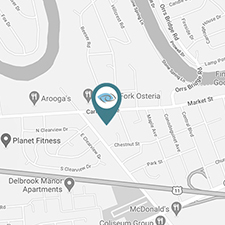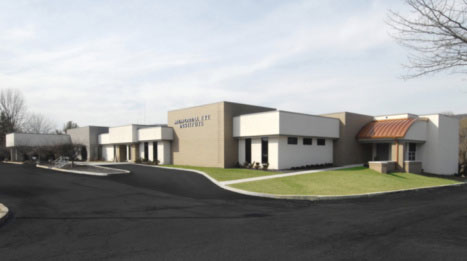Considering LASIK as a procedure to correct your vision can be exciting. However, it can be disappointing to discover that you weren’t a good candidate.
Keep reading to learn how to know if you qualify for LASIK, anyway, and what a good LASIK candidate looks like!
What is LASIK?

LASIK is a laser vision correction procedure. It offers impressive results, with most patients achieving 20/20 vision or better with noticeably improved visual acuity.
During LASIK, your LASIK surgeon at Memorial Eye Institute uses lasers to create a small flap outside the cornea to access and reshape the middle part of the cornea, correcting vision. They then gently replace the corneal flap to reshape the cornea and correct any refractive errors.
The corneal flap acts as a natural bandage as the eye heals, ensuring no stitches or sutures are needed. Most people notice almost immediate visual improvements after LASIK, with vision continuing to improve in the days and weeks after the procedure.
What are the Qualifications for LASIK?
Although LASIK is an incredible procedure, it’s not suitable for everyone. You may be a good candidate for LASIK if:
You Are at Least 18 Years Old
LASIK is only FDA-approved for patients who are 18 and older. Before then, the physical and hormonal changes associated with puberty could affect the shape of your eyes and the strength of your prescription.
Getting LASIK before 18 would mean your vision may not be stable enough for the procedure. If your eyes are still changing, this could affect the results of LASIK.
Any changes to your eyes after LASIK can compromise the quality of corrected vision.
You Have a Stable Prescription
Suitable LASIK candidates need a prescription that’s remained unchanged for at least 12 months. Many LASIK surgeons recommend your prescription be stable for 18-24 months.
A stable prescription is essential to the final results of LASIK. Because LASIK is a one-time procedure, if your prescription changes after the procedure, it can affect the final results.
Your Prescription is Within Certain Limits
LASIK can correct refractive errors, including nearsightedness, farsightedness, and astigmatism. However, there are limits to the strength of these refractive errors.
LASIK can correct nearsightedness up to -12 diopters, farsightedness up to +6 diopters, and astigmatism up to 6 diopters. If your prescription falls outside these limits, you may need to consider another procedure to correct your vision.
Your Corneas are Thick Enough
To safely create the corneal flap, you must have corneas of suitable thickness to qualify for LASIK. Corneas that are too thin can make LASIK unsafe, leading to unwanted complications.
During a LASIK consultation, your LASIK surgeon will check the thickness of your corneas. If your corneas are too thin for LASIK, other vision-correcting procedures may be more suitable and offer similar outcomes to this procedure.
You are in Good Health
Certain chronic health conditions might disqualify you as a LASIK candidate. These conditions include diabetes, high blood pressure, and some auto-immune conditions like rheumatoid arthritis.
Additionally, you cannot undergo LASIK if you have eye conditions like cataracts and glaucoma. If you have healthy eyes and are in good health, you may be a good candidate for LASIK.
Are you considering LASIK?
Disqualifications for LASIK
In addition to thin corneas, certain chronic health conditions, and poor eye health, several other factors would disqualify you as a candidate for LASIK. These factors include:
Pregnancy

Women who are pregnant should wait to get LASIK. Pregnancy-related hormonal changes can temporarily change your prescription and affect the outcome of LASIK.
Dry Eye
If you have dry eye, undergoing LASIK can worsen the condition. LASIK affects corneal nerves, which typically results in slower tear response times. LASIK surgeons recommend waiting to undergo the vision correction procedure until you have dry eye and its symptoms under control.
Eye Injury or Infection
If you have an existing eye injury or infection, you must wait until your eye is healed to qualify for LASIK. Occular scarring from past injuries or procedures might also disqualify you from LASIK.
Alternatives to LASIK
If you are not a good LASIK candidate, you may be a better fit for a procedure like:
Photorefractive Keratectomy (PRK)
Vision correction with PRK is similar to LASIK, but during PRK, the cornea’s outer layer is completely removed to access the middle layer. To protect the eye after PRK, a corneal bandage that promotes healing is placed over the eye.
PRK can be a good option if you have thin corneas. Because it doesn’t require the creation of a corneal flap, thick corneas are not a requirement to qualify for PRK.
The outcomes of PRK are also similar to those of LASIK. Most patients achieve 20/40 vision or better after the procedure!
Refractive Lens Exchange (RLE)

During refractive lens exchange, the eye’s natural lens is completely removed and replaced with an artificial intraocular lens (IOL). Refractive lens exchange is similar to cataract surgery, but can also be performed as an elective procedure to correct vision to allow you to see up close, at a distance, and in between.
Refractive lens exchange is a good option for people with thin corneas, high eye prescriptions, and more than one refractive error. It can offer glasses-free vision to people with nearsightedness and presbyopia or age-related farsightedness.
Refractive lens exchange allows you to customize your vision. Depending on the IOL you choose, refractive lens exchange can provide clear vision at near, middle, and far distances without needing corrective aids.
One of the reasons that LASIK is such a popular choice for correcting vision is that so many people are qualified as good candidates! Do you think you could be a good candidate for LASIK? Find out by scheduling your LASIK consultation at Memorial Eye Institute in Harrisburg and Camp Hill, PA, today!



